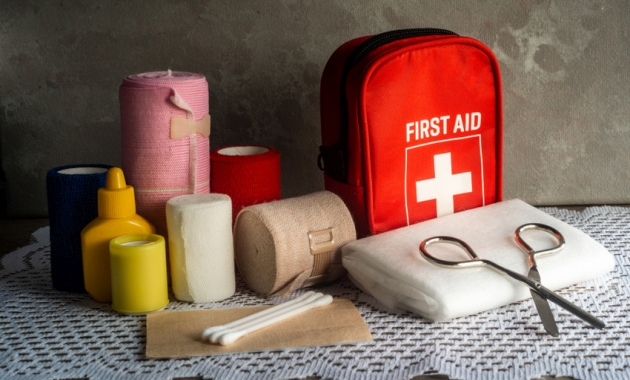
Did you know 59% of deaths from injuries could have been prevented with first-aid? [1] This sheds light on how important first-aid is case of any emergency. The first step in any emergency treatment is to understand what kind of help the person needs. Whenever in an emergency situation, make sure to reach out to the nearest emergency service immediately. While the emergency services reach you, it is important to provide the injured person with first-aid.
First-Aid Tips For Common Problems
Here are some common situations where first-aid can help with quick relief.
1. Burns
The first step is to stop the burn. Douse any flames by covering the person in a blanket. If their clothes catch fire, ask them to drop and roll on the floor. Run cool tap water for 10-20 minutes, but DO NOT use ice, or even ice-cold water on a burn. Extreme cold water applied to a burn can further damage the tissue.
Do not break blisters or remove any burnt clothes that are stuck to the body. You don’t need to cover the burn or blisters unless the clothing is rubbing against them. If you need to cover blisters, put on a clean, dry and loose bandage.
Please Note: Seek immediate emergency help if the burn is on the person’s face, hands, arms, feet, legs or genitals, causes blisters, is large or deep (bigger than the injured person’s hand), causes white or charred skin or is caused due to electric current or chemicals.
2. Cuts
If there’s bleeding, place a clean cloth over the injury and press firmly. Clean the wound with running cool water for 5 minutes. Cover the injury with a sterile bandage.
3. Fractures
Until the patient can be checked by a doctor, immobilize the fractured part with bandages, using the support of the patient’s body. Never tie a bandage over the injured part as the fracture may cause swelling which may make the bandage tighter, interrupting blood flow.
Applying ice packs can help relieve pain and swelling. Pick one from our exclusive range.
Get here.
4. Insect bites/stings
In case of an insect bite, remove the sting with tweezers or by applying pressure around the sting. Clean the wound with water and apply an antihistamine ointment to relieve itching. If it is an animal bite, clean the wound with mild soap and run warm water for 10 minutes. Apply any antibiotic cream and cover with a sterile bandage until the doctor sees it.
Remember, one right & prompt action on your end can help save someone from an adverse situation. Take note of these tips, keep them handy & educate others about them to ensure the safety of those around you.
(The article is reviewed by Dr. Swati Mishra, Medical Editor)
Recommended Reads:
First Aid: Tips To Follow For Burns
First Aid: Tips To Stop Bleeding
Reference:
1. Hammett E. First aid saves lives-ten powerful reasons to learn first aid this year.
Update on Jan 7, 2019. https://firstaidforlife.org.uk/first-aid